The rise and fall of Macy's, the beloved American retailer that just received a $6.6 billion buyout bid
As one of the oldest and largest department stores in the nation, Macy's is an icon of American retail.
Despite its dominance, Macy's has struggled in recent years to overcome slumping sales and continues to shutter stores.
Here's the story of Macy's rise to iconic American retailer and a look at its recent stumbles.
In its nearly two centuries in operation, the Macy's name has become more or less synonymous with pure Americana.
Since its humble beginnings as a small dry-goods store in New York City, Macy's has pioneered several components of the modern department store, including on-site tailoring, dining, and elaborate window dressings. Over the years, it established enduring traditions like the Macy's Thanksgiving Day Parade and the Fourth of July fireworks show.
Despite its dominance in both retail and culture, Macy's hasn't been impervious to challenges including the retail apocalypse and the pandemic, both of which contributed to dwindling foot traffic and slumping sales.
In 2020, the company announced a major business overhaul that has involved multiyear store closings and mass layoffs as Macy's looks to course correct. It also has undergone a series of executive shake-ups, most recently including the announcement in March that Tony Spring would replace Jeff Gennette as CEO.
In December, The Wall Street Journal cited sources saying an investor group had made a $5.8 billion buyout bid to take Macy's private. After rejecting that offer, Macy's announced drastic cuts last month to turn around years of sluggish sales. The department store announced it will shutter 150 stores and reinvesti in better-performing locations.
In March the investor group — comprising Arkhouse and Brigade Capital — returned with a higher offer of $6.6 billion, saying Macy's aforementioned restructuring plan "failed to inspire investors."
While the fate of the retailer remains unknown, we took a look at the meteoric rise and recent struggles of Macy's.
Macy's was founded in New York City by Rowland Hussey Macy in 1851.

Prior to founding the store, Macy worked on a whaling ship until age 19 before he began working at his father's store in Massachusetts. In 1844, Macy attempted to open his own store, a needle-and-thread shop in Boston, and later a series of dry goods stores, all of which proved unsuccessful until he opened his iconic New York City shop.
The original store was located on the corner of 14th Street and 6th Avenue.

Source: Macy's
In the following years, Macy began to grow his fledgling business. He started by expanding into 11 nearby buildings and adding merchandise categories.

Source: Macy's
Macy created the modern department store as we know it today. He is credited with several major contributions to the retail industry.

Source: Macy's
They include implementing a series of policies never been seen before in retail, including buying and selling products using cash only and creating the one-price system rather than bartering.
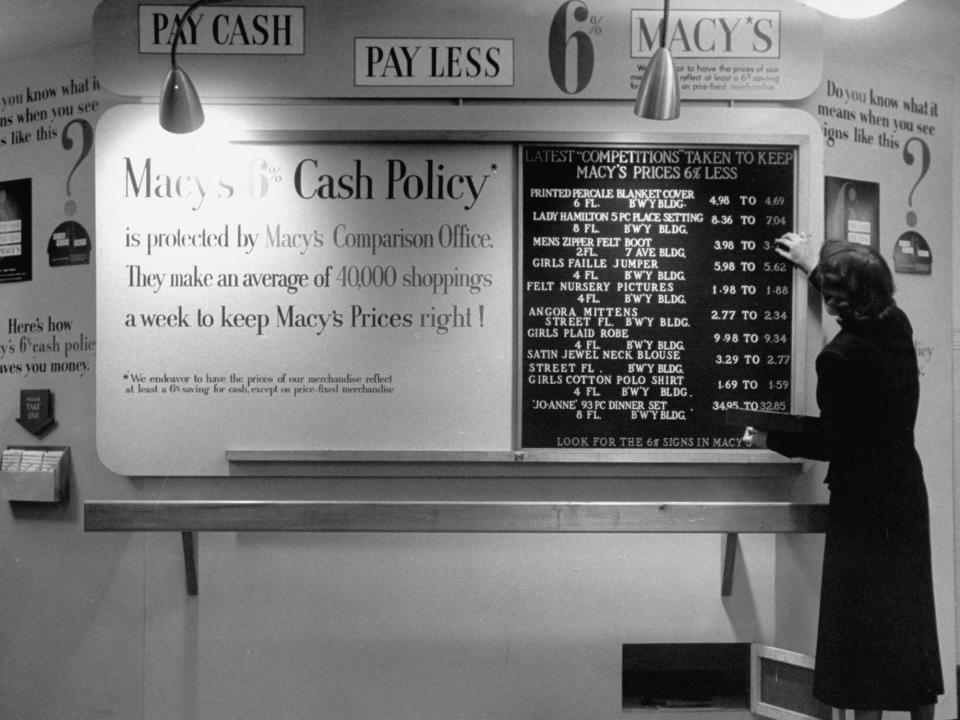
Macy was among the first to print the price of goods in newspaper advertisements and offer money-back guarantees if customers were unsatisfied with their purchases.
He also introduced then-revolutionary products to the New York City market, such as the teabag, the Idaho baked potato, and colorful bath towels.
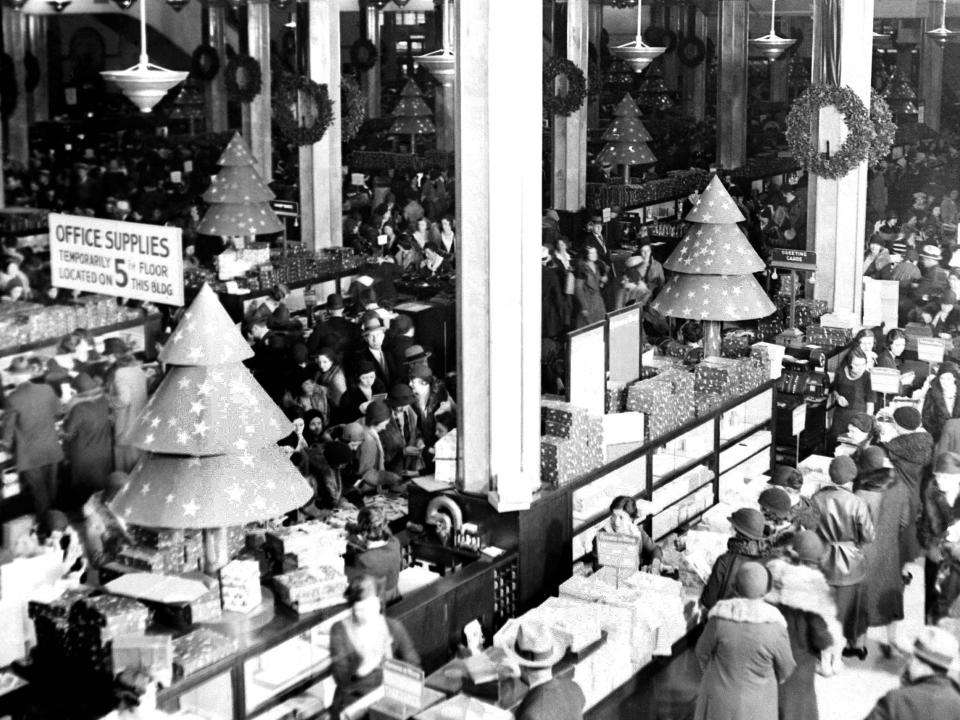
Source: Macy's
Additionally, Macy created a made-to-measure clothing operation that produced clothes onsite, essentially instituting the common practice of offering tailoring services at major department stores.
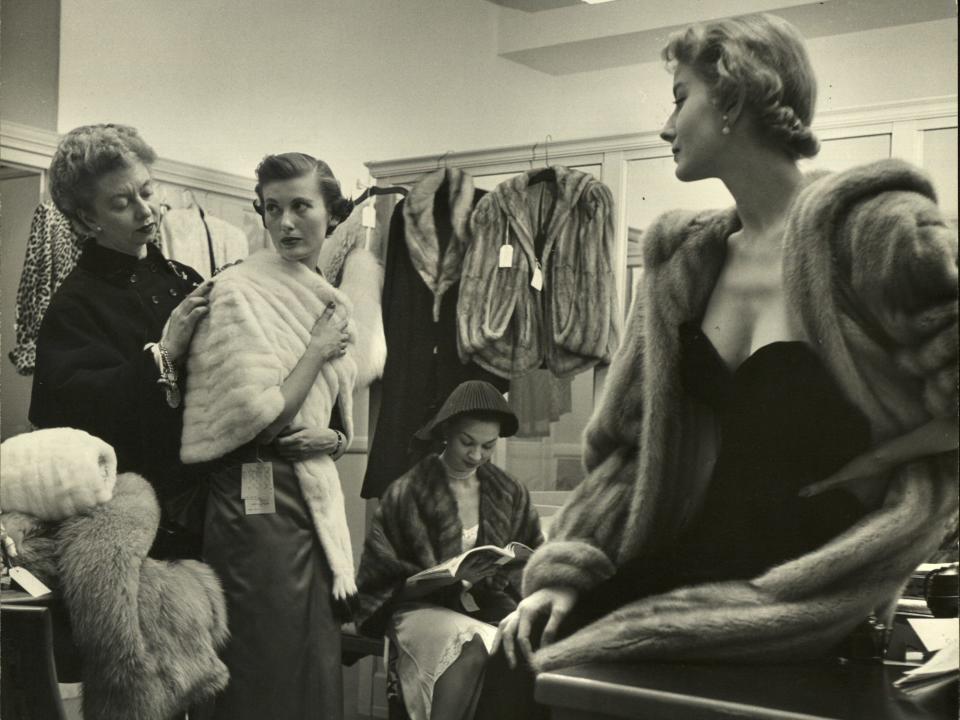
Source: Macy's
In the 1860s, Macy's became the first retail store to acquire a liquor license and serve beverages onsite.
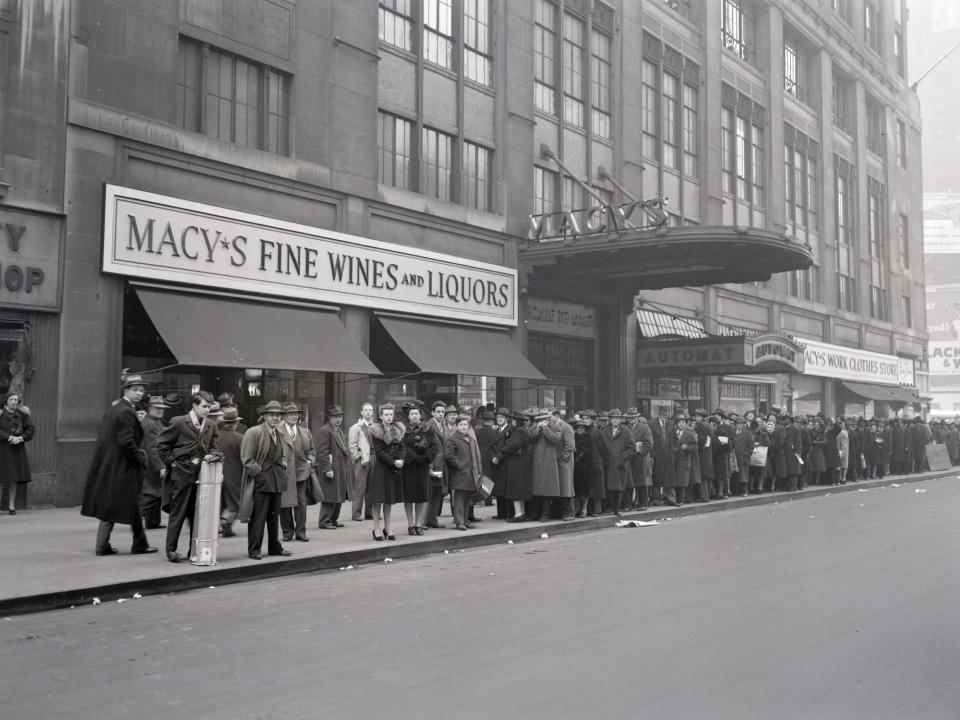
Source: Macy's
In 1862, Macy's created the concept of the retail Santa ...

Source: Macy's
... and in 1864, the company established the practice of elaborately decorated holiday windows that are still popular today. Thus, the idea of "window shopping" was born.
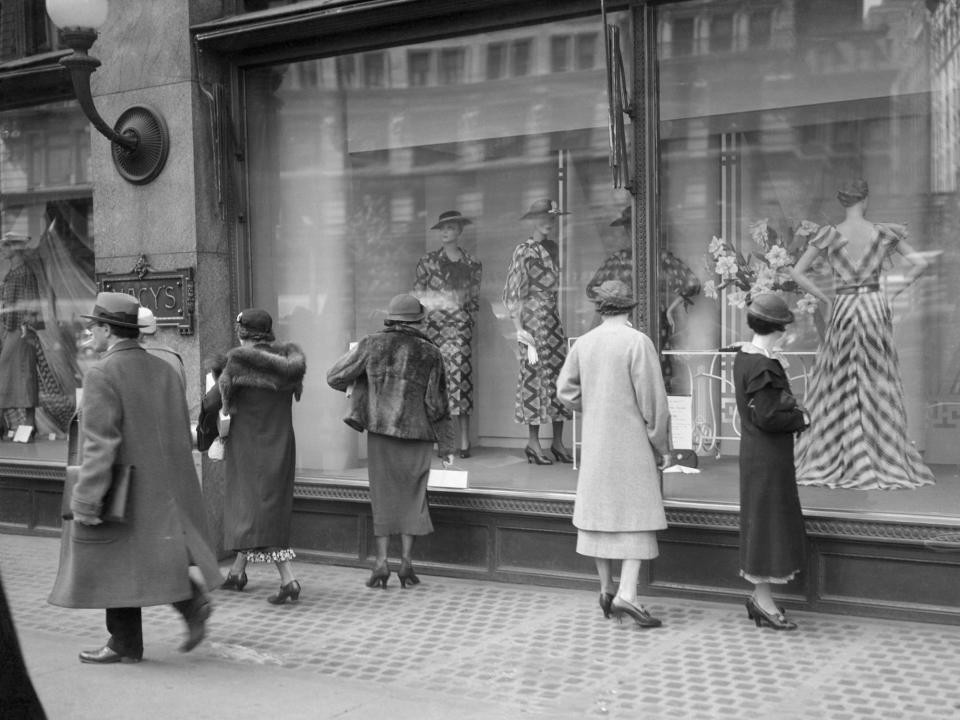
Source: Macy's
After R. H. Macy passed away in 1877, the Macy family continued to operate the business until 1885, when the Straus family took ownership.

Source: Macy's
In 1902, the Straus family moved Macy's to Herald Square, to a nine-story store that in the years to come would become an iconic location in pop culture.

Source: Macy's
By 1924, the store had completed a renovation that officially made it the largest department store in the world.
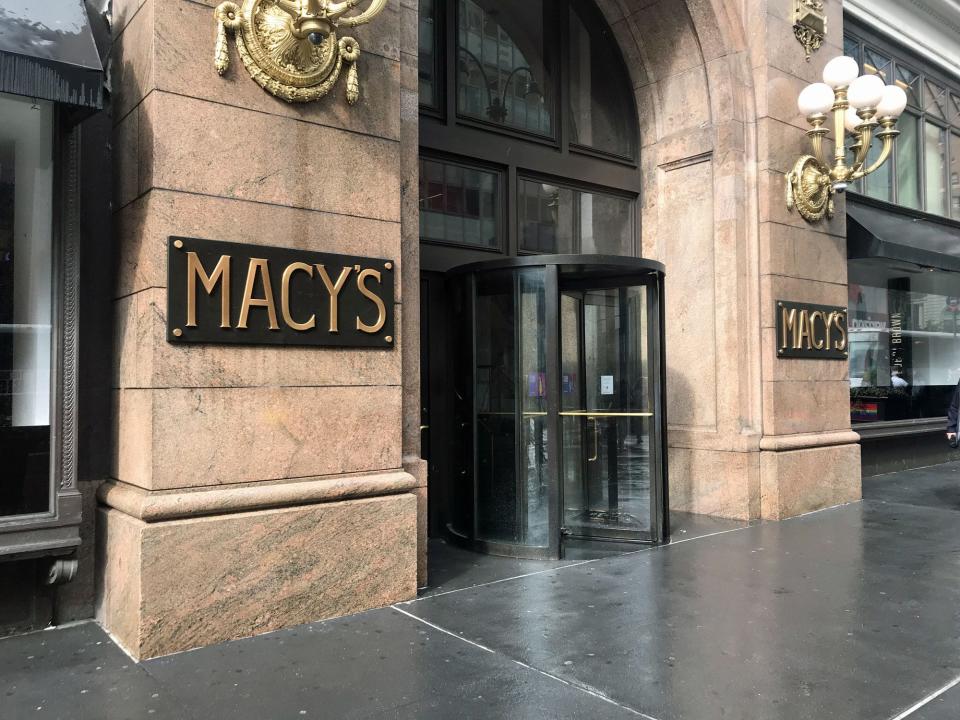
Source: Macy's
That same year, Macy's held its inaugural Thanksgiving Day Parade. 10,000 people gathered to watch the first parade, which included animals from the Central Park Zoo.
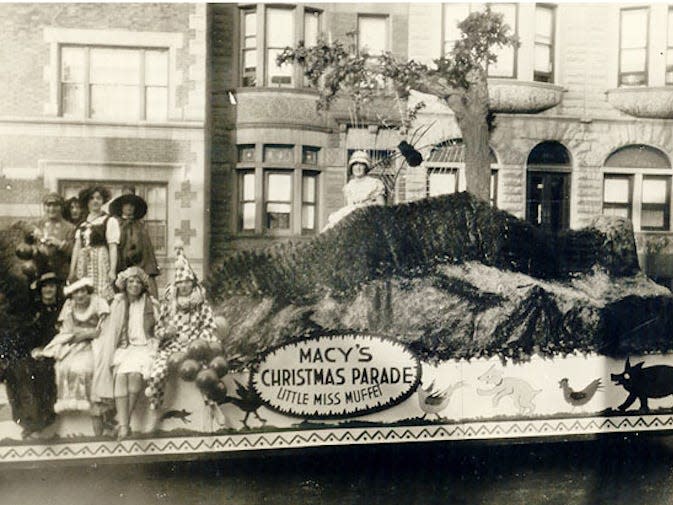
Source: Macy's
Over the next few years, Macy's began introducing its elaborate floats, which became an essential part of the iconic annual event.
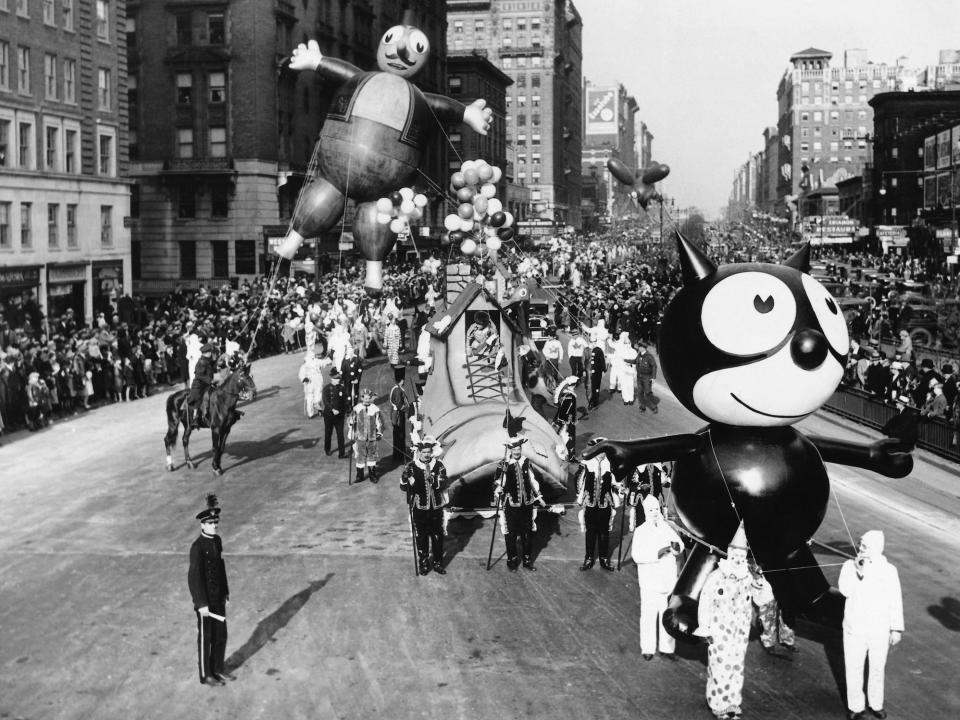
Under the Straus family tutelage, Macy's expanded nationally, becoming a mainstay in malls and suburban shopping centers.
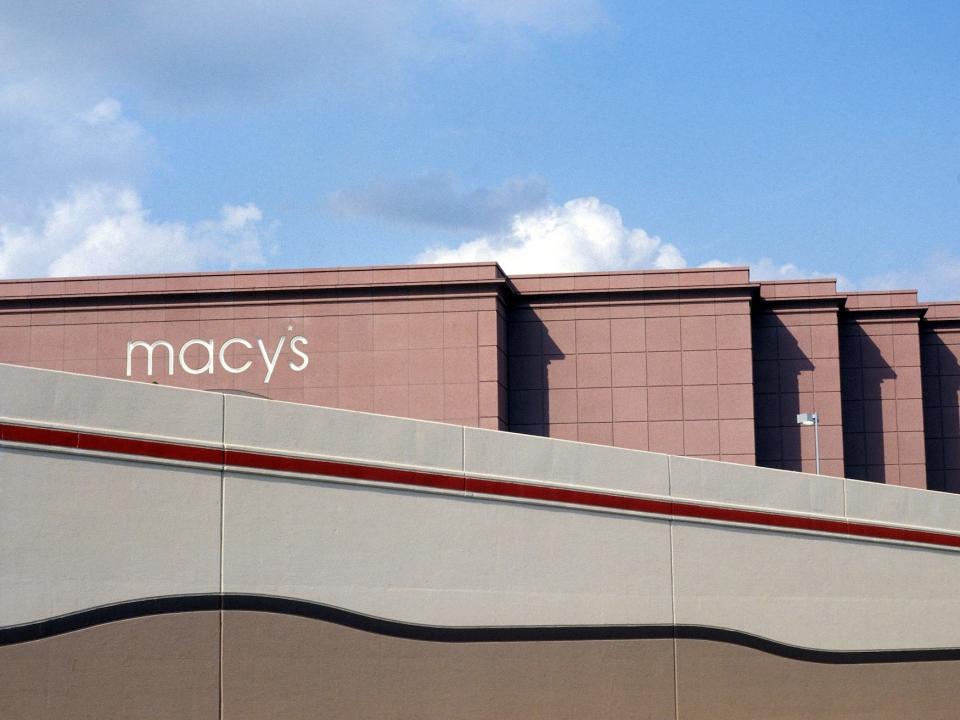
Source: Encyclopedia Britannica
Over the next few decades, Macy's star continued to rise, as it became a go-to department store destination around the country.

Macy's continued to gain cultural clout in 1947, as an integral part of the classic film "Miracle on 34th Street."

Macy's continued to bring panache to major national holidays when it started its annual Fourth of July fireworks show in 1976.

The first sign of major strife for Macy's began in the mid-1980s, after a series of missteps including an unsuccessful buyout coincided with an economic recession that left the retailer in massive debt.
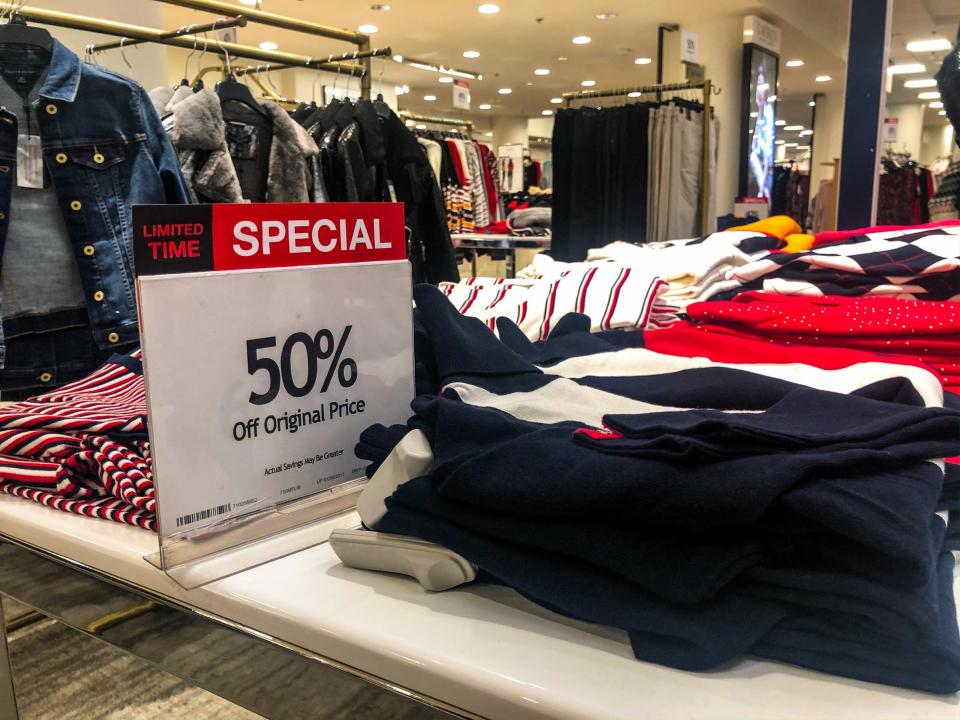
Source: Encyclopedia Britannica
Overwhelmed by debt, in 1994 Macy's merged with Federated Department Stores, Inc., then the largest department store company in the US.

Source: Encyclopedia Britannica
Federated operated a slew of local department store companies including Lazarus, Filene's, and Bloomingdale's, among others.
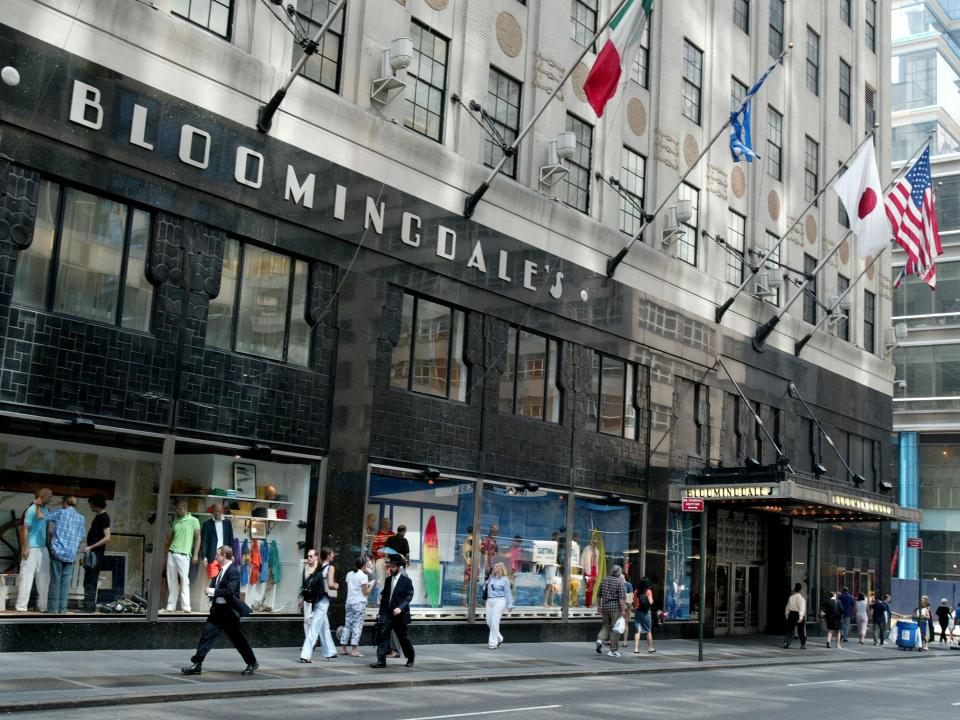
The 1990s served as a key marketing period for Macy's, ushering in big-name partnerships with celebrities and supermodels like Kate Moss ...

... and actress Sarah Jessica Parker, who served as a face of the athletic wear line Macysport ...

In the 2010s, Macy's began experimenting with new concepts, like its off-price store Macy's Backstage. Macy's recently announced plans to grow the fleet.
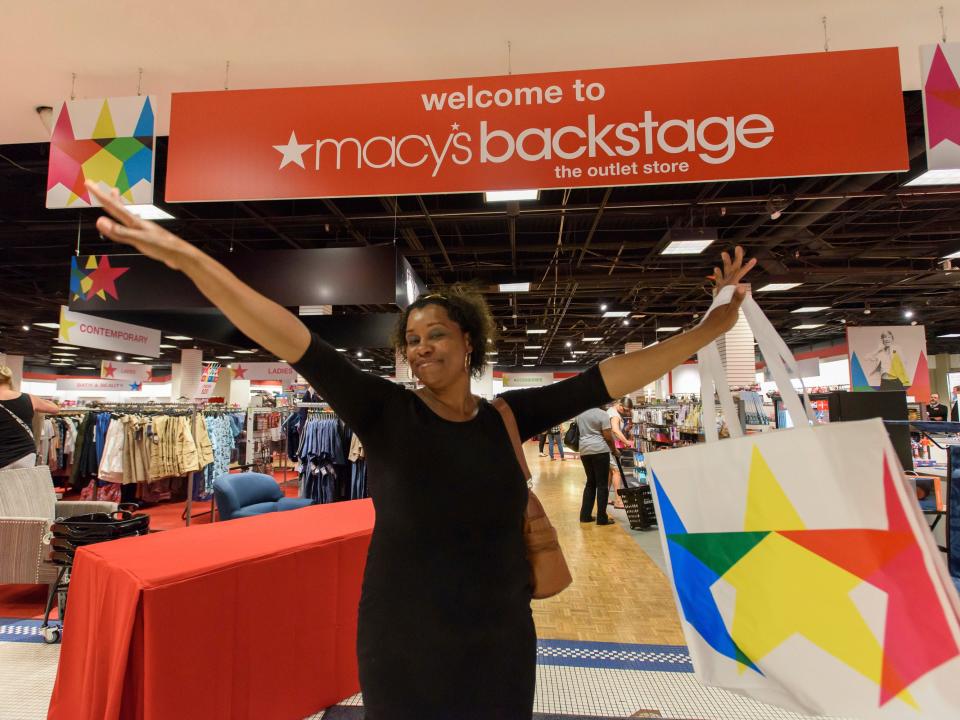
Source: Macy's
... and even performances from popular boy bands of the time, like 98 Degrees.

In an effort to capitalize on the internet boom, Macy's launched its e-commerce site in 1997.
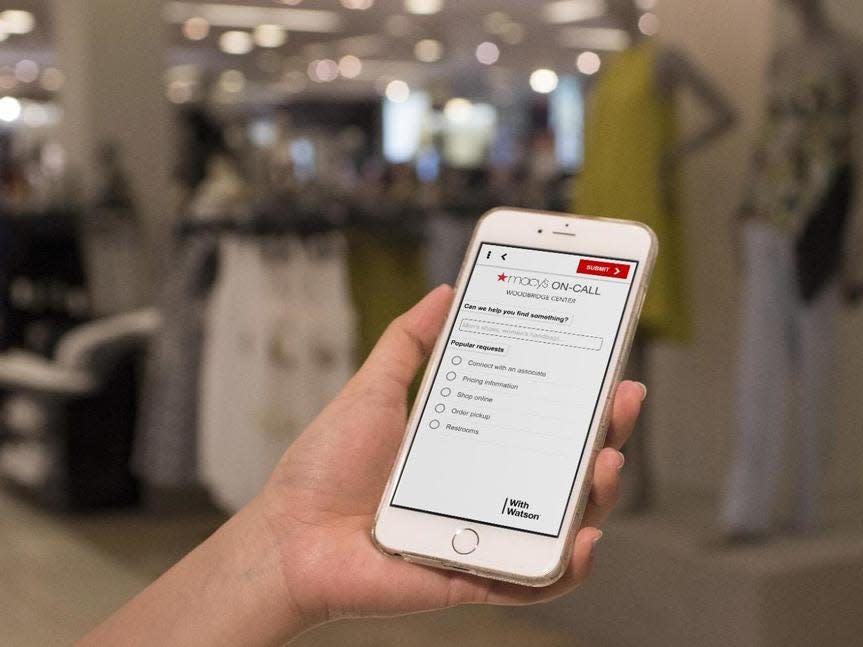
Source: Macy's
Around this time, Macy's also beefed up its loyalty program and Macy's rewards card to attract shoppers.

In 2006, more than 400 stores under the Federated umbrella changed their name to Macy's, and the store's national dominance grew. By 2007, Federated decided to rebrand as Macy's Inc.

Source: Encyclopedia Britannica
However, Macy's was not able to fend off the retail apocalypse. In January 2015, the company announced it would close 14 Macy's and Bloomingdale's stores around the nation.
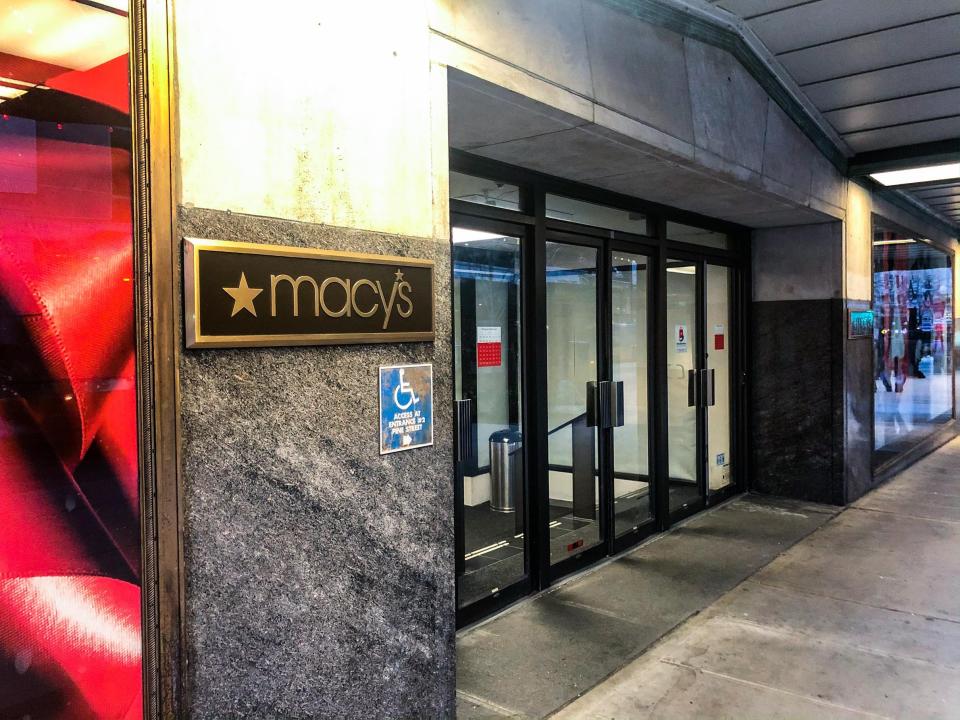
In 2005, Federated made several critical moves including acquiring The May Department Stores, Lord & Taylor, and Marshall Fields.
In September of that same year, Macy's announced it would close an additional 40 stores as sales continued to drop.
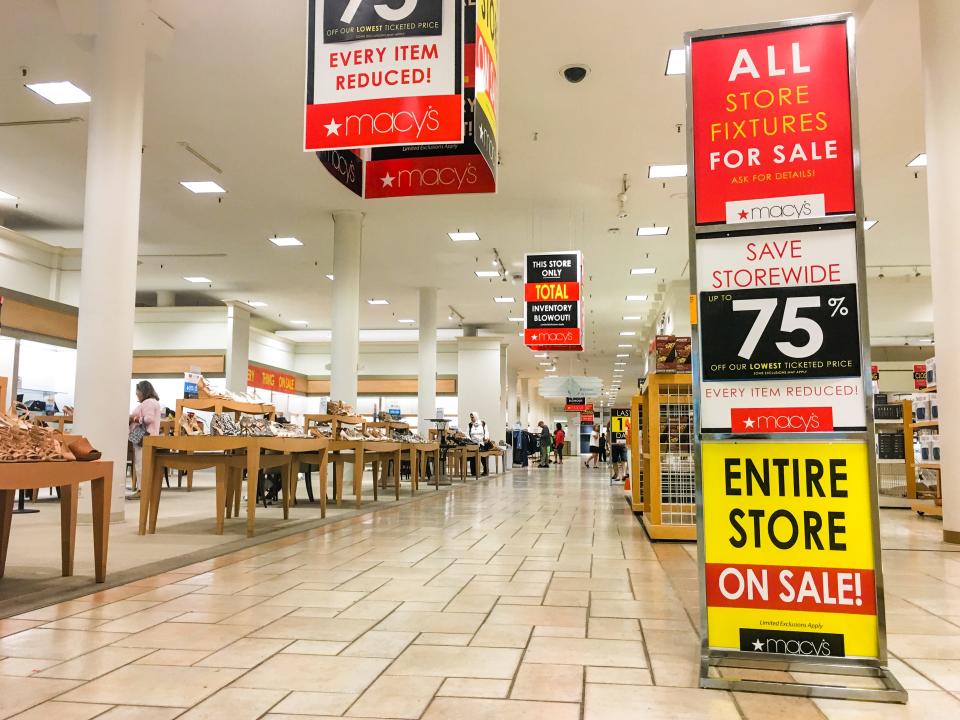
Stores continued to shutter over the next few years, as the company struggled against dwindling foot traffic and the rise of e-commerce.
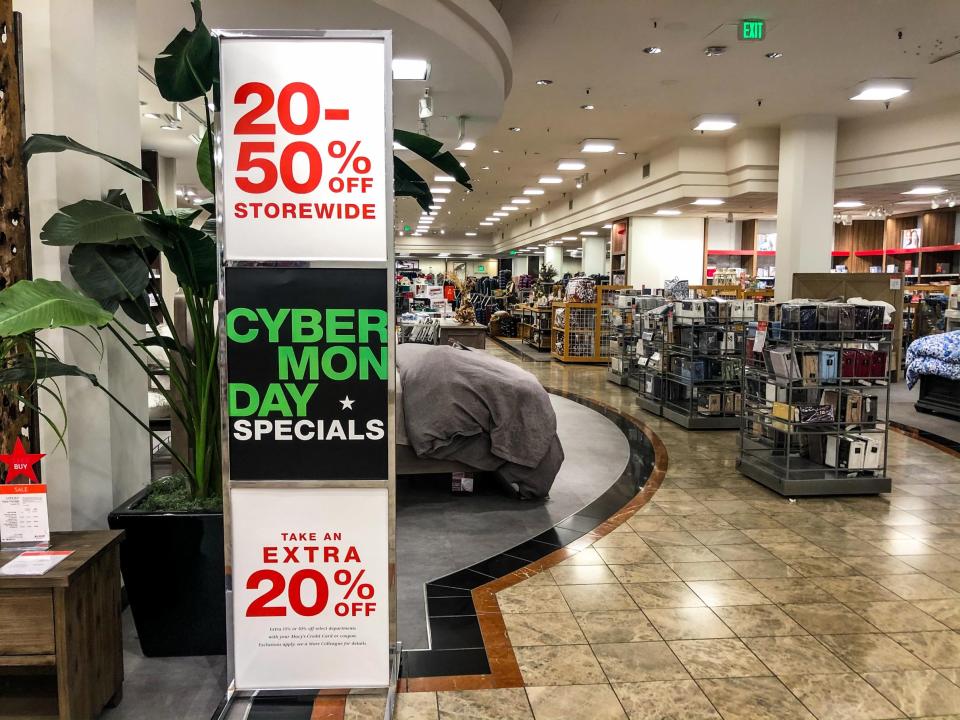
In an attempt to bring more people into stores, Macy's tested new concepts like Story, a rotating pop-up shop it launched in stores in June 2018.

Source: Insider
In February 2020, Macy's announced a massive restructuring that would close 125 stores and cut 2,000 jobs.

As part of the new strategy, Macy's also closed offices in San Francisco, Cincinnati, and Lorain, Ohio.
The five-pronged, three-year plan is intended to generate savings of $600 million in 2020 and $1.5 billion annually by 2022.
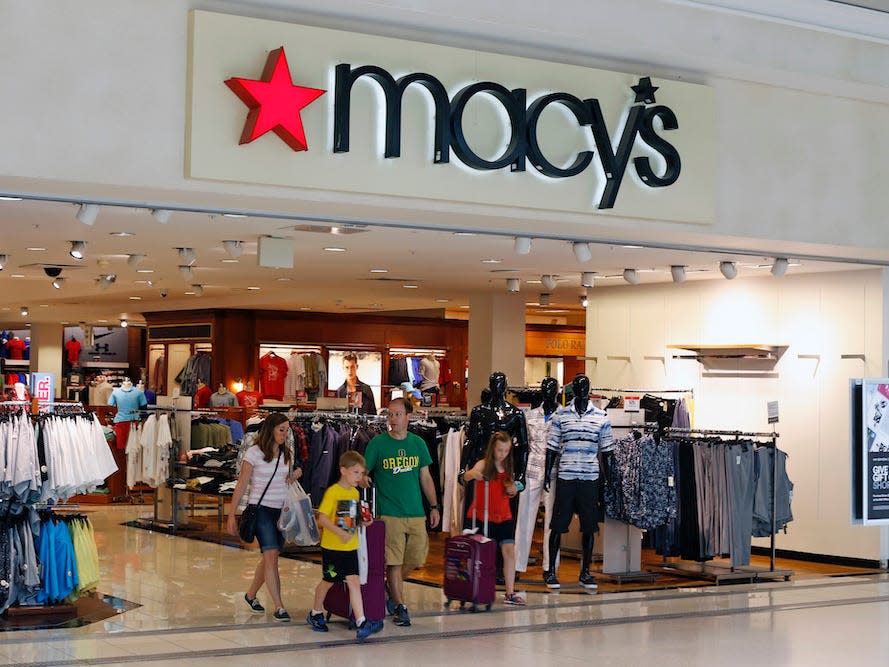
Source: Insider
It also involved experimentation with concept stores that operate outside of traditional malls.

Source: Insider
This experimentation included joining crypto craze in 2021, when Macy's auctioned off NFTs depicting its most iconic Thanksgiving Day Parade floats.

Source: Insider
During the 2022 holiday season, Macy's launched hundreds of Toys 'R Us revival shops within its stores.
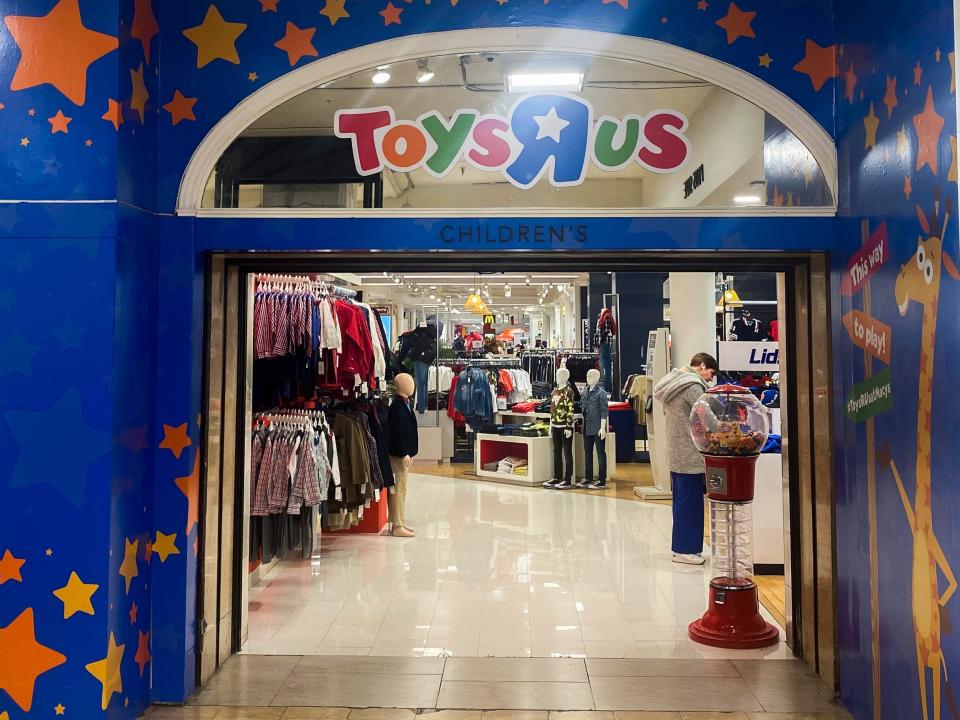
Source: Insider
In 2023, Macy's closed another wave of stores as part of its multi-year restructuring plan.

Source: Insider
Behind the scenes, the company also underwent a series of executive shakeups. In February 2023, Macy's CEO Jeff Gennette, 61, retired after working at the company for 40 years.

He was replaced by Tony Spring, 58, CEO of Bloomingdale's, who assumed the position in March 2023.

Today Macy's operates 623 stores under both its namesake brand and Bloomingdale's — which Macy's also owns, along with the e-commerce site Bluemercury — as well as 160 specialty stores across the US.
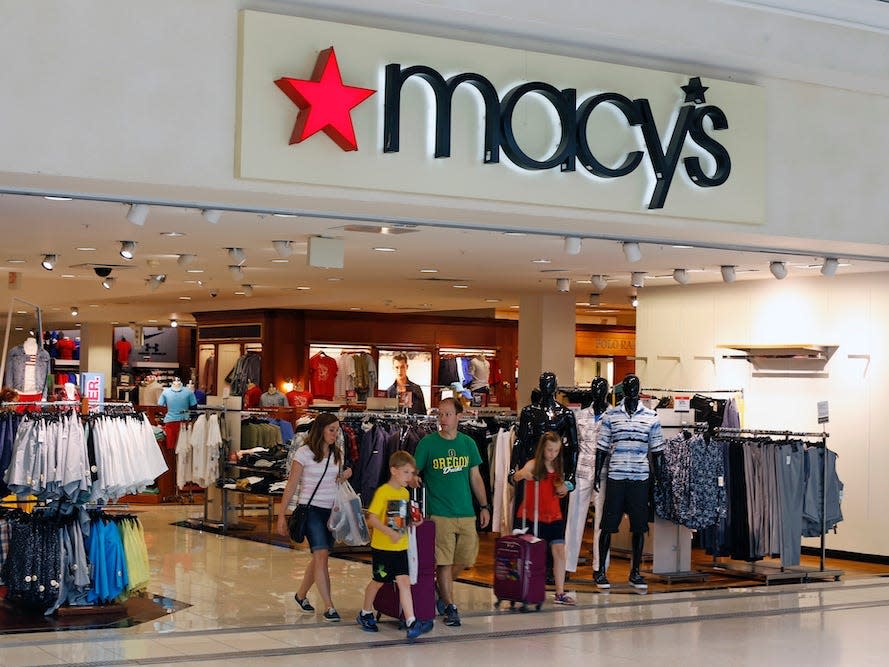
Source: Macy's
An investor group offered to buy Macy's for $5.8 billion
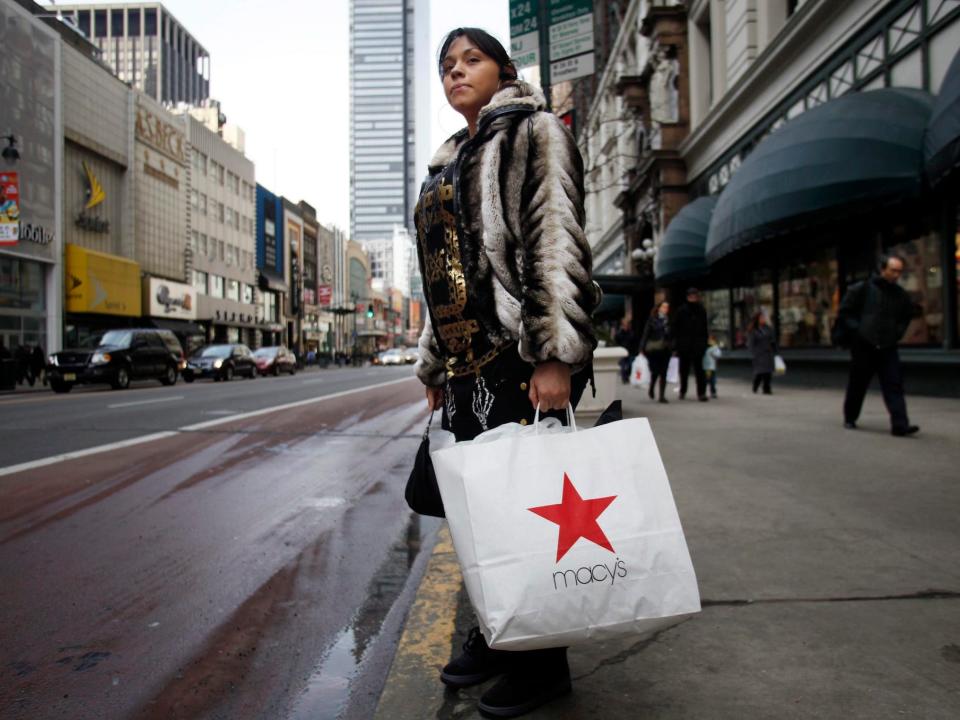
On Monday, the Wall Street Journal reported that an investor group submitted a proposal to buy Macy's for $5.8 billion. The investor group is comprised of real-estate investing firm Arkhouse Management and global asset manager Brigade Capital Management.
After rejecting the buyout offer, Macy's announced it was shutting down stores.

After rejecting the buyout bid, citing a "lack of compelling value," Macy's announced drastic cuts to turn around sluggish sales.
One hundred and fifty stores in the next three years will be shut down, Macy's said.
Turnaround plans also included revitalizing its merchandising assortment and a modernized in-store and online shopping experience, the company said.
The investors returned to Macy's and upped their takeover offer to $6.6 billion.
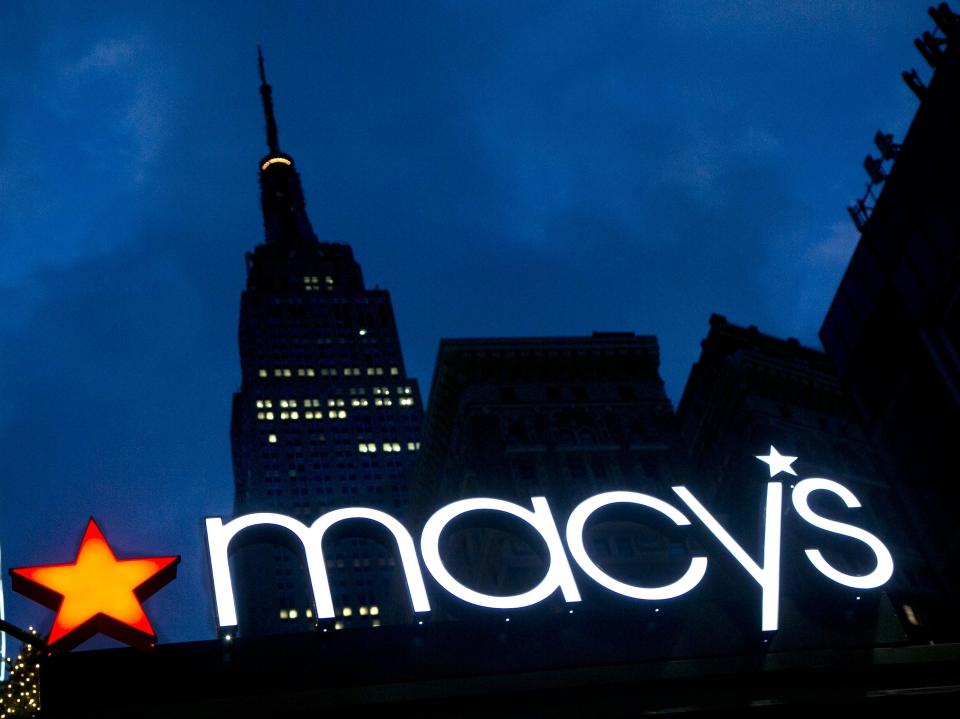
In March, the investment firms returned to Macy's with a higher offer of $6.6 billion — a 14.3% increase over their initial proposal.
In a statement, Arkhouse's managing partners Gavriel Kahane and Jonathon Blackwell said they were "frustrated by the delay tactics" on the part of Macy's board.
The activist investors said that the previous restructuring plans had "failed to inspire investors."
Read the original article on Business Insider


